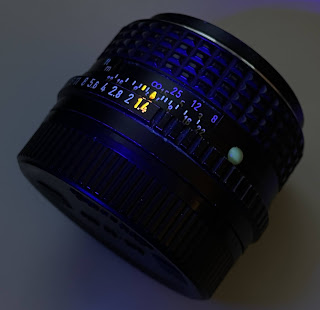A lot of the cameras I use from the 70s to 90s have fluorescent paint in the number or markings on the lenses.
I decided to use neon paints to make numbers easier to read on some old lenses, or simply upgrading their looks.
1- I used Ikea Mala paints because they're cheap and come in 5
colors that will react to black light (pink, orange, purple, green and
yellow) for less than $10 and have a needle point bottle. But you can
also use any acrylic paints.
2-Daub paint on the numbers or letters you wish to paint after putting some tape to cover other areas, avoid making bubbles
3-Scrape excess paint with a piece of cardboard (like a business card, which is flexible). Wipe the other areas either immediately with fingers or qtip or wait for it to be dried to chip it off
4-The painted glyphs will now be more legible under low light and pop out under black light. Here, the orange paint I used very closely matches the one that was the manufacturer used on the zone focusing markings:
You can use the same technique to improve several daily objects that have embossed information.
Disclaimer: no functional lens was damaged in the making of this














Comments
Post a Comment